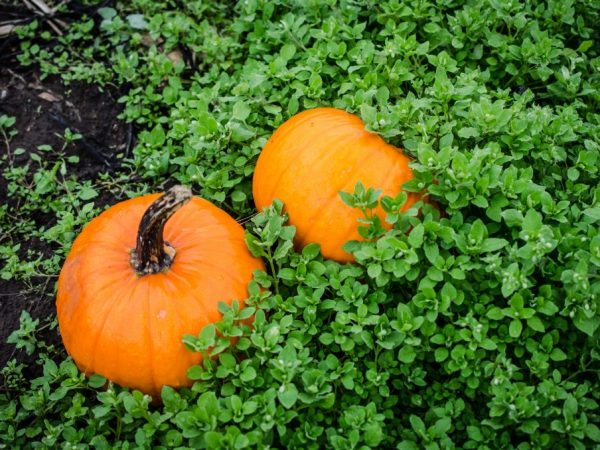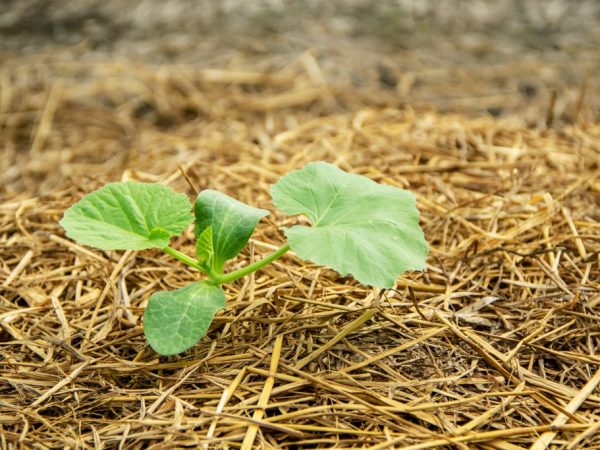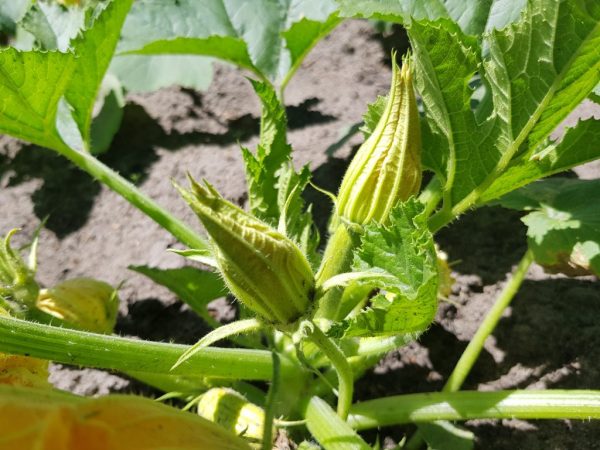Features of the "Vitaminnaya" variety pumpkin
Vitamin pumpkin belongs to the nutmeg varieties. It has a brown skin, crispy juicy flesh and few seeds. It does not require special storage conditions. The cultivation technology is simple, even a beginner can get a large harvest.

Features of growing pumpkin varieties Vitamin
Description of the variety
Pumpkin "Vitaminnaya" refers to late-ripening varieties. From the moment of planting in open ground until the fruit is fully ripe, at least 5 months pass. Because of this feature, it is rarely planted in cold regions.
It got its name due to its high nutrient content.
Description of fruits:
- elongated shape;
- large, average weight up to 7 kg;
- the peel is dark, thin;
- the pulp is bright orange, dense and juicy;
- there are few seeds.
The fruit has a nutmeg aroma and a sweet taste. They tolerate transportation and long-term storage well.
Growing seedlings
According to the description, this is a thermophilic culture, therefore, sowing seeds in open ground is carried out only in the southern regions. In the north, it is better to plant this with seedlings.
Sowing preparation
Self-harvested or purchased seeds are suitable for planting.
Growing seedlings begins with a thorough preparation of the seed:
- Warming up. Seeds selected for sowing are laid out on a pallet and put in a warm place for a month. The warmed-up seed will give more female flowers - this will have a positive effect on the yield.
- Sorting. After warming up, empty seeds are taken: material is placed in a container with a salt solution - those that have drowned are suitable for planting. The rest are disposed of - they will not sprout.
- Hardening. In order for the seedlings to withstand temperature fluctuations, the seeds must be hardened. They are wrapped in a damp cloth and placed in the refrigerator for 3 days.
- Disinfection. To protect the future of the plant from pests, the seeds are disinfected. For one day, they need to be soaked in a weak solution of potassium permanganate.
Sowing seeds
After all these activities, you can proceed to planting seeds for seedlings. The best time is the beginning of May. For growing seedlings, peat pots and special soil are taken.
Seed planting technology:
- In a prepared container with earth, a 2 cm depression is made.
- The seed is laid.
- Sprinkle lightly with earth.
- The soil is irrigated with a spray bottle, it should be slightly moist.
- Cover with plastic wrap.
You should get a mini greenhouse. It is placed on the sunny side of the house and regularly opened for ventilation. As soon as the first shoots appear, the film can be removed.
Open ground transplant

Seedlings can be planted in early June
The pumpkin rises and grows quickly and if all the deadlines are met, it can be transplanted into open ground in early June. By this time, the plant should already have a third leaf.
A heat-loving variety, even at the beginning of summer, seedlings can only be planted in a greenhouse.
Technology:
- Dig small holes.It is important to maintain a distance of 60–100 cm between each plant.
- Spill hot water - 2 liters for each hole.
- Plant a pumpkin and sprinkle it with earth, completely covering the root collar.
- Mulch with manure or peat.
The time for planting seedlings in open ground for the southern regions is also suitable for seeds. Put 2-3 pieces in a wide hole and cover them with earth. Top mulch with peat. Seeds are also planted in the greenhouse.
Pumpkin care
All further activities are aimed at maintaining the health of the plant until the time of harvest.
In caring for a vitamin pumpkin, everything is important: loosening the soil, regular watering and feeding.
To have a lot of fruits and plants to develop normally, much attention is paid to caring for the lashes.
As the pumpkin grows, it releases many twisting stems. They are fixed in the soil with tendrils. These outgrowths allow the plant to receive nutrients along its entire length.
As soon as it grows, in places where such antennae appear, they need to be sprinkled with earth and additionally shed. You cannot move or cut the stems.
Additionally, the soil under the bushes is mulched with humus or straw. This allows moisture to be retained to avoid weed overgrowth.
The pumpkin needs to be thinned out as soon as the first shoots appear - this is necessary only for direct planting of seeds in the hole. If 3-4 bushes have sprung up, leave 1-2. Thinning of seedlings is carried out only after the formation of several leaves. You cannot pull them out - there is a high risk of damaging the root system of the desired seedlings. They can simply be cut at ground level.
Watering

The plant needs regular watering
There is no special scheme for moistening the soil. The main thing is to do it regularly. The frequency of water application depends on weather conditions: drought - plants are irrigated twice a week. During the flowering period and the ovary, the fruits are also watered; rainy - if this weather lasts more than a week, then there is no need for watering.
Watering the pumpkin is completely stopped 2 weeks before harvest. If you continue to add moisture, the skin will be thin, and the fruit will be watery. Such a pumpkin will not lie even until winter, it will quickly deteriorate.
Bait
There is a specific fertilization scheme for Vitamin Pumpkin, it is the same for all nutmeg varieties:
- the first feeding is carried out 7 days after planting seedlings in open ground;
- if seeds are germinated - 3 weeks after sowing;
- fertilizers are applied regularly every 3-4 months until the ovaries appear.
You can fertilize with chicken droppings or manure. For the first groundbait, the ratio with water is 1: 4. where most of the liquid is diverted. Until the ovaries appear, the pumpkin can be fertilized with wood ash or a vegetable mixture. The proportions are the same - 50 grams of dry matter per 10 liters of water.
If the summer turned out to be cold, then the pumpkin is additionally sprayed with a urea solution: 10 grams per 10 liters of water.
Harvesting and storage
This procedure is carried out only after the onset of biological maturity of the fruit. It is easy to determine it - the stalk dries out, a clear pattern appears on the hardened bark.
The pumpkin is harvested in dry weather, always before the first frost. The fruits are cut with the stalk and sorted. Damaged or unripe pumpkin will have to be processed, and the one that can be stored all winter is additionally dried in a warm room. You can put the fruits in the sun for 2 weeks. A sure sign that the pumpkin can be sent for long-term storage is that the stalks are grafted, the bark has hardened.
Before the onset of cold weather, the fruits can be stored on the balcony or in a dry room. As soon as the temperature at night starts to drop below 5ºC, the pumpkin should be moved to a warmer place.
If the harvest is large, the fruits can be stored in the garden, in a trench. For this, they cover it with a thick layer of straw, sprinkle it with earth, leaving ventilation holes.
Reviews of gardeners about this variety
According to many summer residents, the Vitamin pumpkin has more advantages than disadvantages:
- seeds sold in stores germinate well;
- seedlings in the open field take root quickly;
- the pumpkin grows in all directions, spreads strongly on the ground;
- weeds do not attack her, diseases are also rare guests;
- out of 3 seedlings, you can get up to 9 pumpkins, it's enough to eat yourself and treat your friends.
Many people note the pleasant taste, especially the delicious jams and mashed soups made from it.

